Imagine this… You are in an African wildlife park where animals roam freely and are protected from hunters and poachers, while still being able to be in their own habitat and environment. Africa’s absolute best are of course the Big Five: the lion, the leopard, the black rhino, the African forest elephant and the African buffalo. They are examples of majestic megafauna. In Habitats, you will safely keep animals in a familiar environment: their Habitats. The Big Five will appear, but also some other familiar and special creatures such as the honey badger and the honey bee.
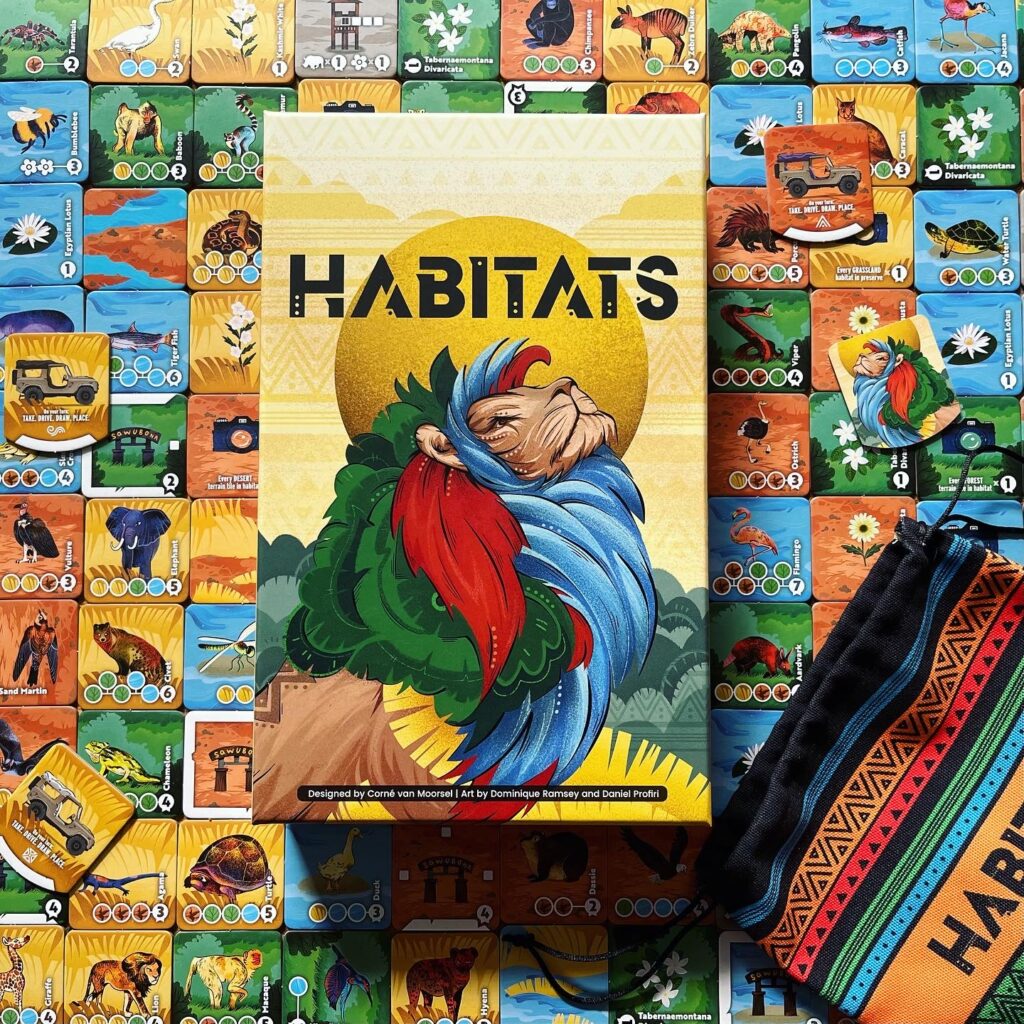
Goal
The title of the game actually reveals quite a bit about what players will be doing during this game: building different habitats by laying and connecting tiles. Each player takes on the role of the overseer of a large wildlife park full of flora and fauna and is given the keys to a 4×4 with which they go in search of the most beautiful animals, plants, as well as various amenities to furnish their park. Each animal needs their natural habitat such as grassland, scrubland, rocks and/or lakes and often even a combination of these. Each animal has different needs and therefore you need to puzzle your park together in the right way.
An animal (or a tile) is only happy if its natural habitat has been correctly recreated for it, otherwise it does not earn any points at the end of the game. Besides animals, players also earn points with other tiles (such as flowers, camps, towers, tourists and gates) in the park.
Setup
At the beginning of the game, one of the long tiles is placed on the table on the correct side for the relevant number of players. This tile indicates the pattern in which habitat tiles are placed on the table to form the ‘market’, the players’ starting positions and the number of rounds per year. In addition, this tile has two notches per year. Random goal tiles are placed in these notches. These tiles indicate which goals players can achieve to score points at the end of a year.
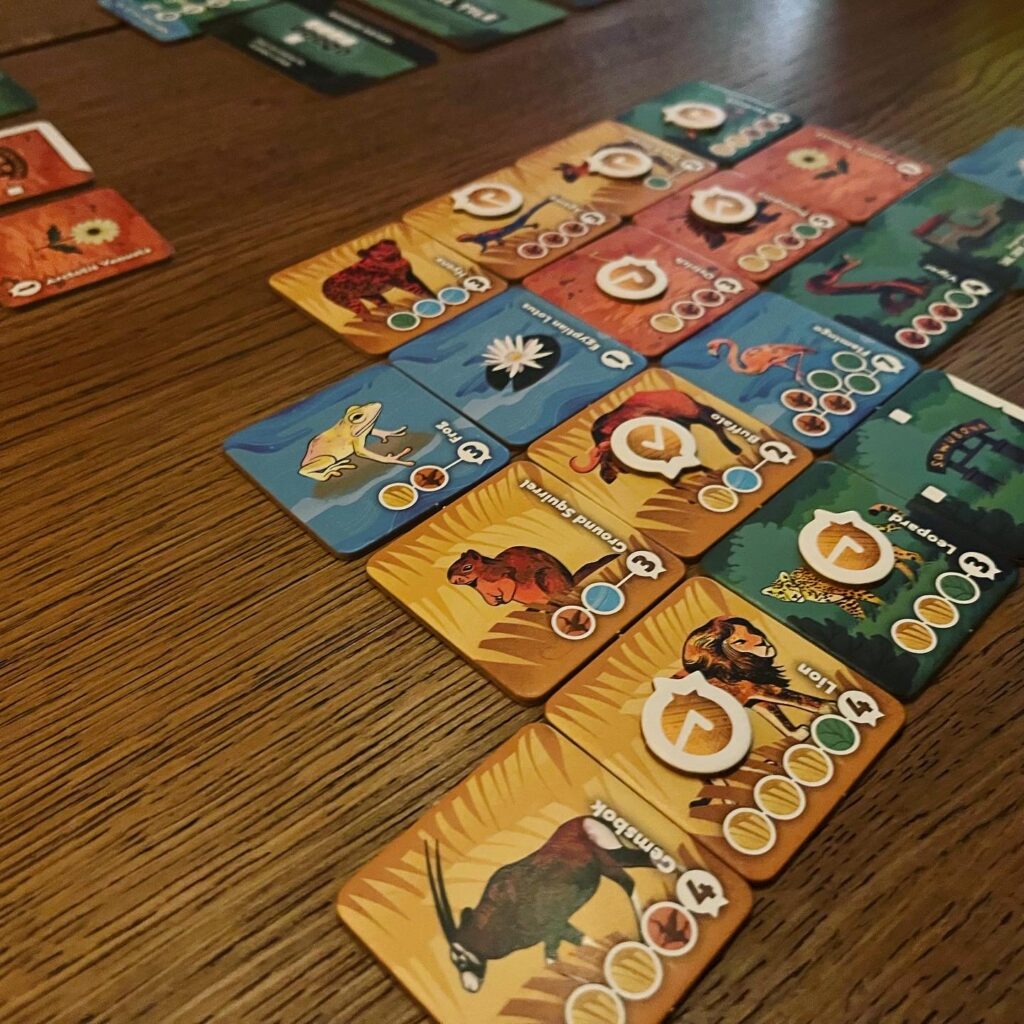
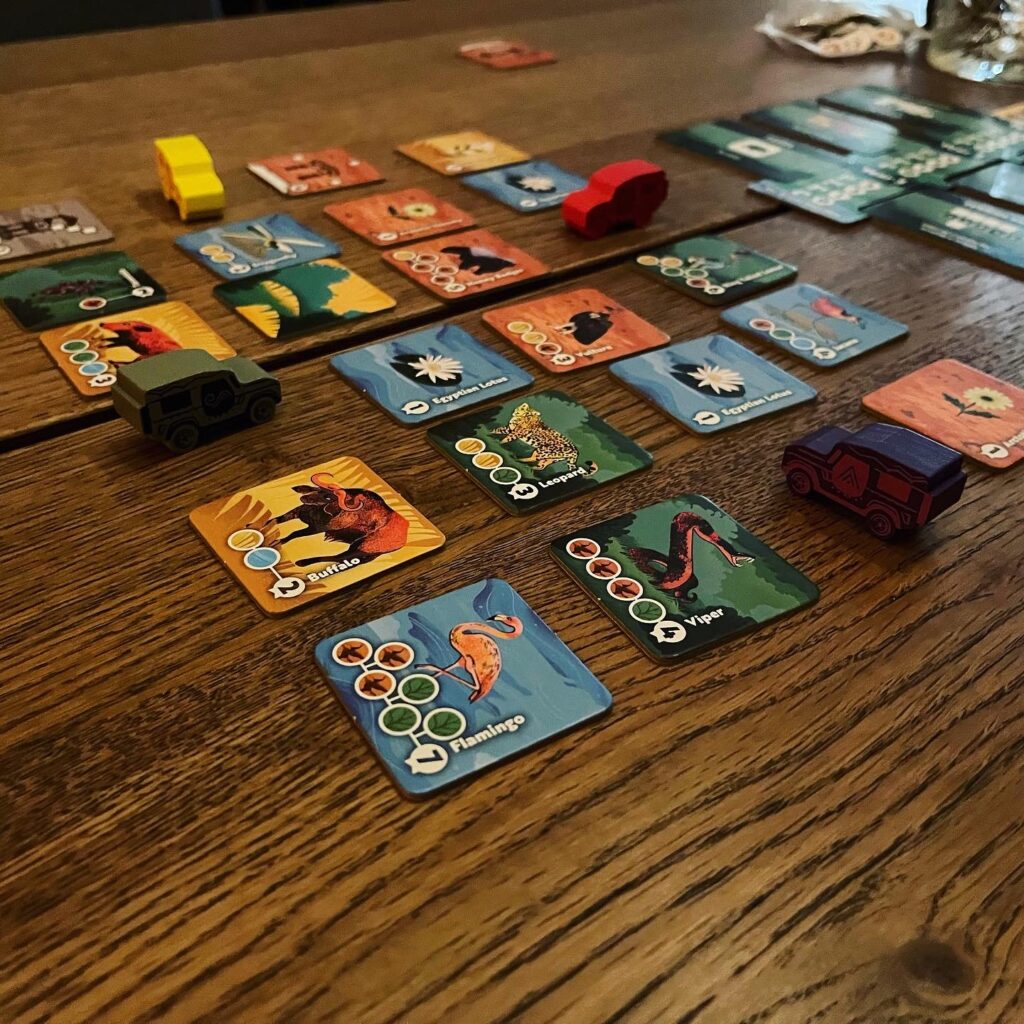
Each player gets a jeep (a wooden meeple) and already a starting tile (with an entrance) to start their park with. The bag is filled with the habitat tiles and tiles are drawn from this bag and placed in the right pattern to form the market. Players are ready to start building their game park….
Gameplay
A turn in Habitats always consists of the following actions: take, drive, draw and place. During your turn, you take one of the tiles directly in front, left or right of your vehicle. So you may not take a tile that is behind your jeep, but you may ‘pass’ through another jeep. You then drive your jeep in the direction of the tile you just took, draw a new tile from the bag and place it on the empty space created by moving your jeep. The tile you grabbed from the market at the beginning of your turn, you place on a spot of your choice in your park and your turn is over.
A game can truly be that simple! Habitats has only a few rules, but the complexity, strategy and tactics follow from the scoring. In fact, all types of tiles have a special way of scoring and many tiles are often unique.
Animal tiles contain circles with different colours or flowers. This shows which tiles and/or habitats (groups of tiles in with the same background colour) should be adjacent to these animal tiles. Animal tiles all have their own background colour too, so you try to puzzle the right animals together. Flowers score a point and have a background colour. With flowers and animals, you can also earn extra points by placing watchtowers. By placing animals and flowers in certain patterns, you earn points with this tower. Towers themselves have no colour, by the way. With gates and camps, players earn points by building in these tiles, and with tourists, players can earn points with larger habitats.
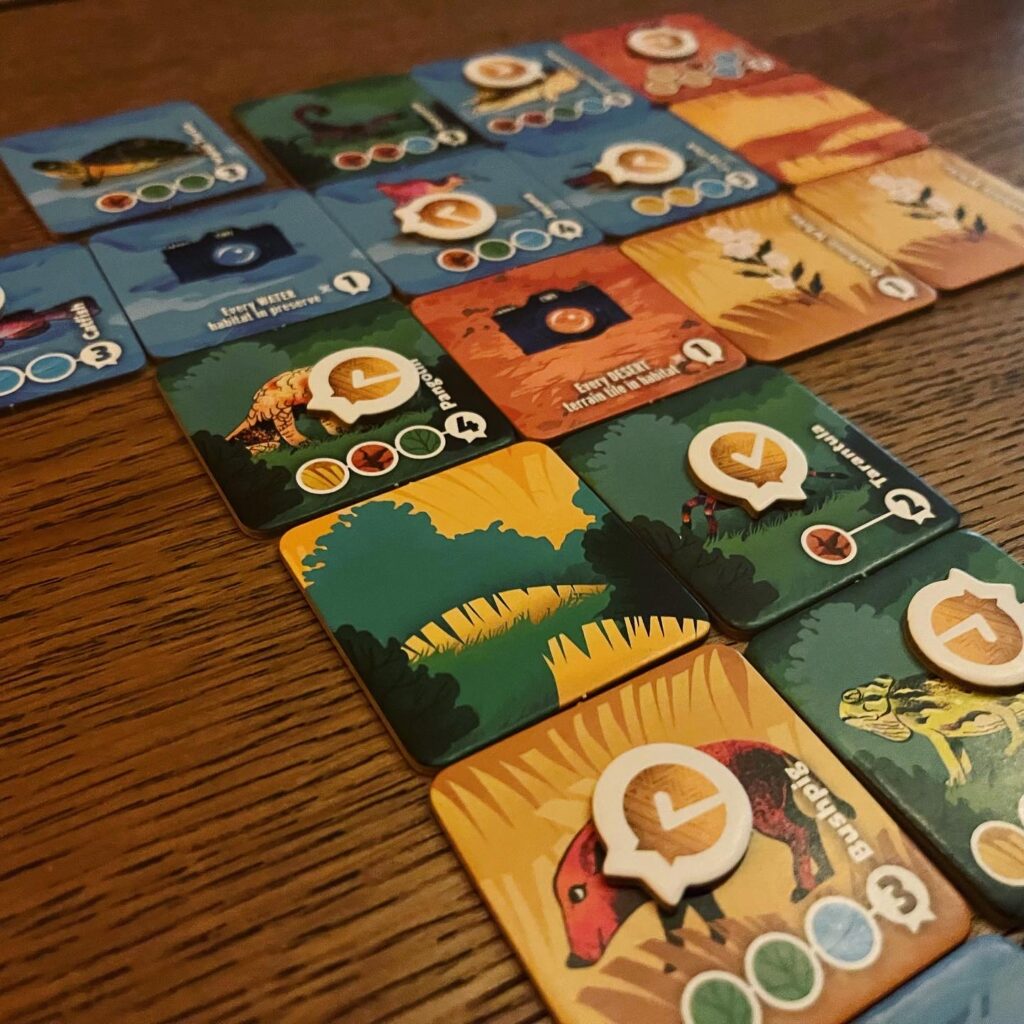
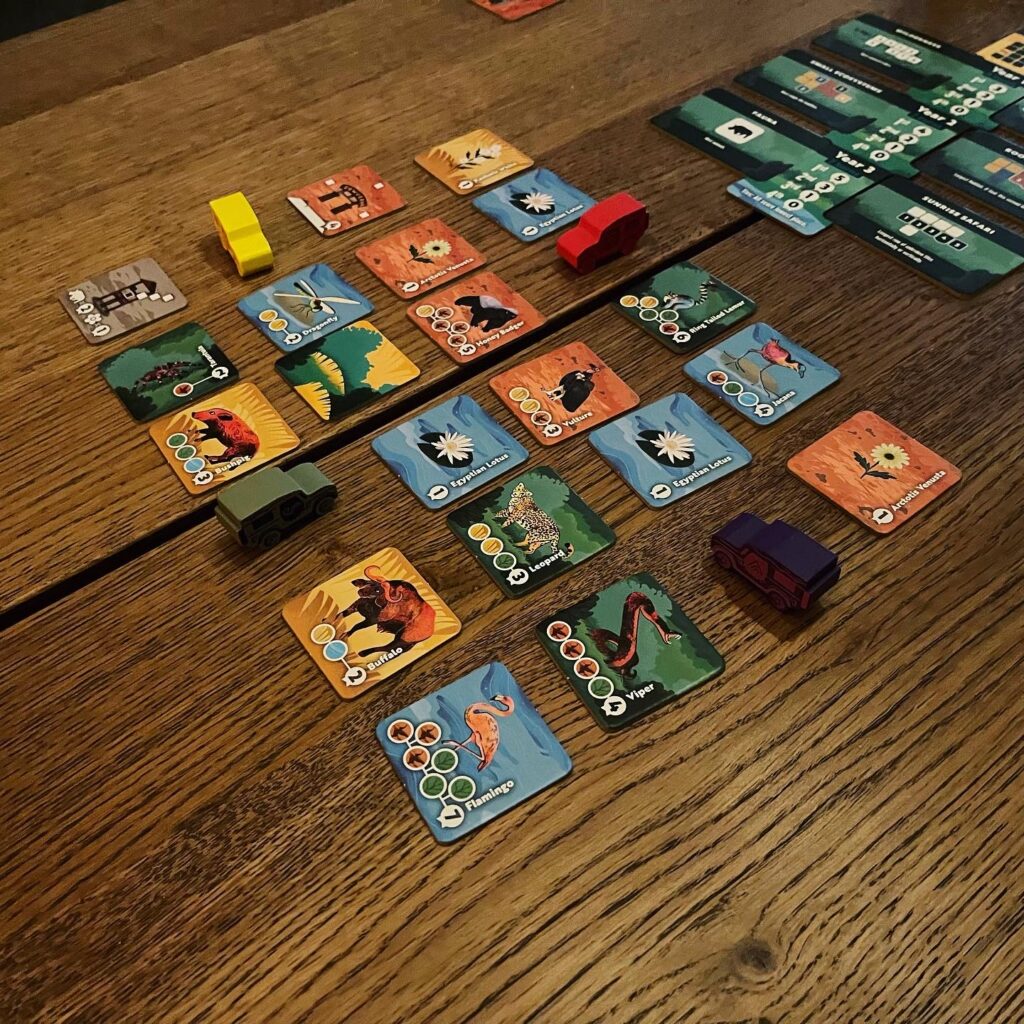
At the end of each year (after x number of rounds), players check whether they have met the two goals and which player has the best score for each. Players receive points depending on their score. At the end of the game (after three years), players receive points based on their park and tile placement. During the game, players can use tokens to easily keep track of which animals have already met their ‘conditions’.
Verdict
Habitats is a delightful puzzle and brainteaser. As I described above, the game has few rules, but a lot of depth. You may already know a similar puzzle with tiles from Nova Luna, a game by the same creator as Habitats. However, Habitats has been published previously. This new edition from Allplay (formerly Board Game Tables) is particularly beautifully designed and of high quality. The tiles are sturdy, the draw bag is beautiful and the meeples are detailed. Habitats, by the way, is just a bit more complex as a puzzle than Nova Luna and the theme speaks more to the imagination.
The gameplay, as well as the puzzle, is intuitive, making it easy to pick up Habitats and explain it to new players. Because the game contains many different objectives, but also habitat tiles, each game is also different in terms of strategy, so the game will not get boring easily. Fun for all kinds of animals!



